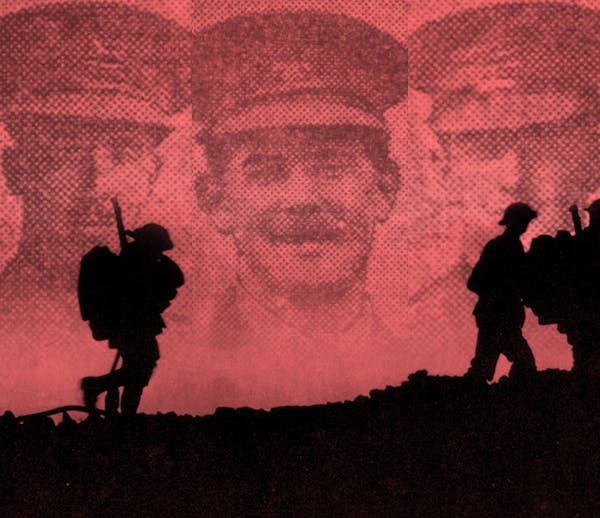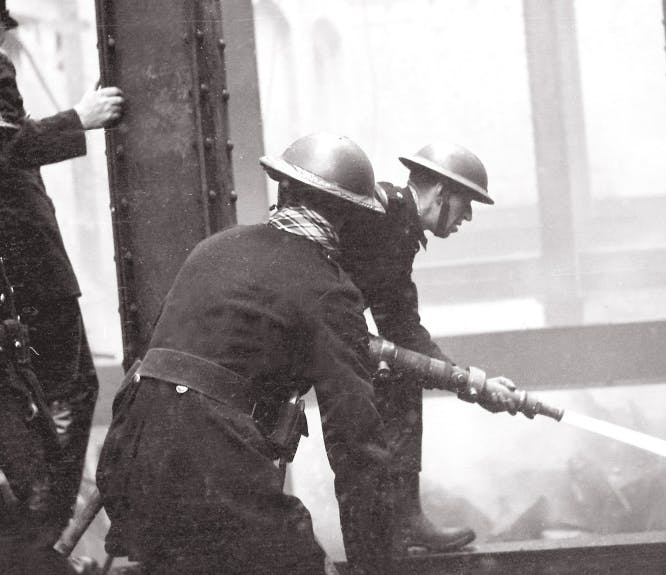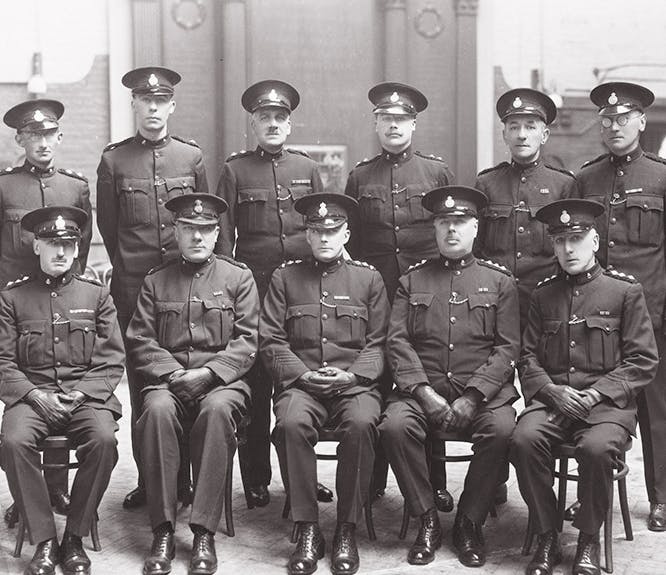What can we learn from counting rooms in the 1921 Census?
4-5 minute read
By Mary Mckee | January 9, 2023
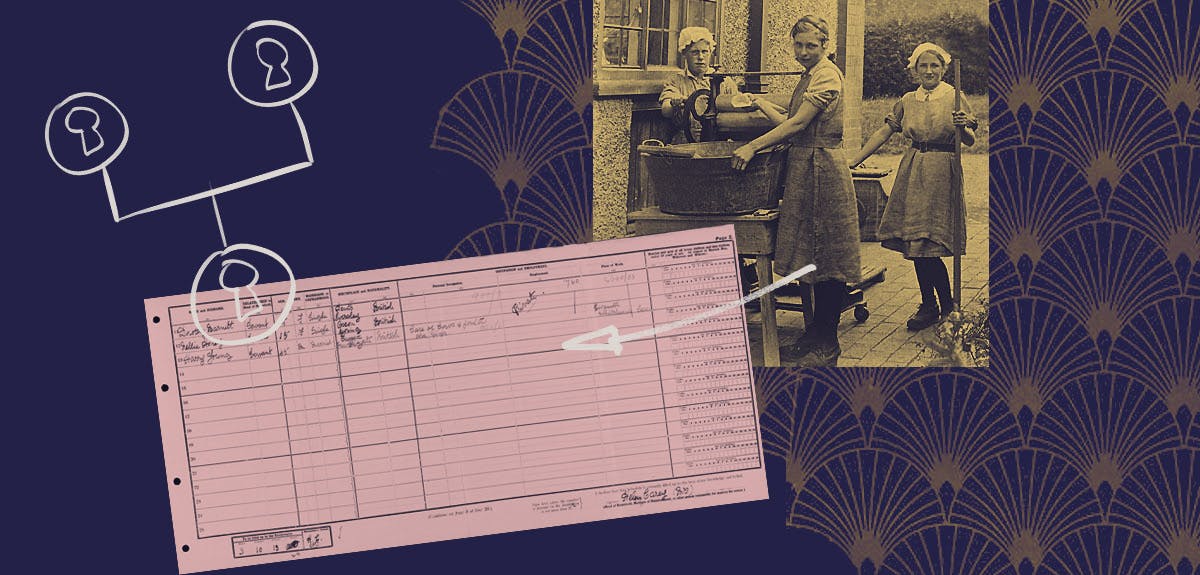
How many rooms are in your home? How do you define a room? That was the task of the enumerators of the 1921 Census of England and Wales. Expert Mary McKee discusses what we can learn about our ancestors' houses.
One of the things I love about the 1921 Census of England and Wales, among many, is the small box at the bottom left corner of every household census schedule.
It tells you the number of people in the house, as well as the number of rooms.
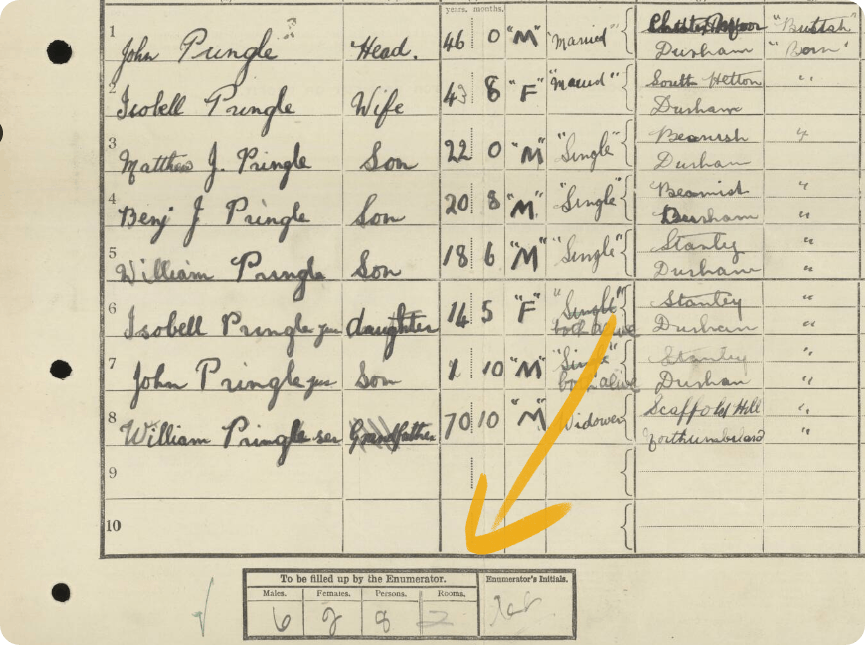
Eight people living in two rooms, as noted in the 1921 Census. View this record here.
With this small table, you can gain insight into your ancestors’ living conditions.
How was a room defined in 1921?
The Census of England and Wales 1921 General Report defines a room as:
""For the purpose of the census, the rooms enumerated are the usual living rooms, including bedrooms and kitchens, but excluding sculleries, landings, lobbies, closets, bathrooms, or any warehouse, office or shop rooms. "
"The term scullery occasioned some difficulty in certain parts of the country and enumerators were instructed to exclude such a room from the count of living rooms, when it adjoined a living room but was used for purpose of washing, cleaning or cooking, and was not used as a place in which meals are eaten.”"
It was the enumerator’s responsibility to ask the necessary questions to ascertain the number of rooms in the house.
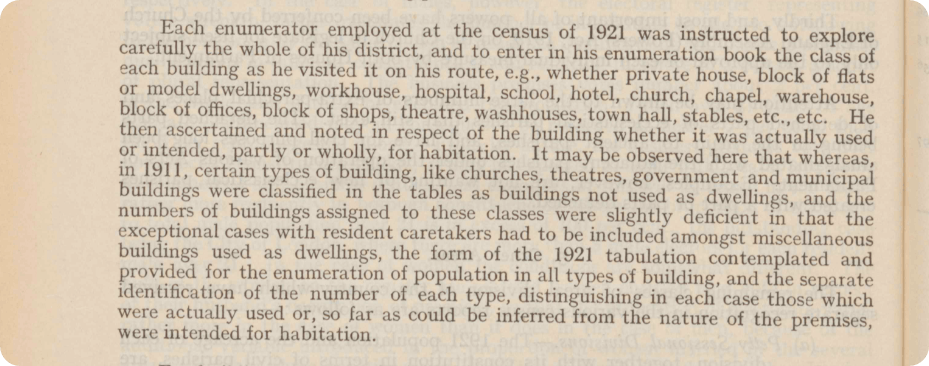
A snippet from the Census of England and Wales 1921 General Report.
However, not everyone was so forthcoming with the information. 60-year-old Mary Padfield of Bristol refused to answer the enumerator’s questions about the number of rooms in the house and instructed her servants to do the same.

A 'rude woman' in the 1921 Census. View this record here.
In fact, the enumerator went so far as to call her a very rude woman on the return.
Why did the census office gather this information?
The purpose of the census is to gather reliable figures about the population. Every question in a census was carefully considered.
The figures related to the number of living rooms in each homes were used to understand the housing conditions of the population of any area, whether it was a town or city. It also provided data about overcrowding, especially in industrial areas.
The Census Reports are an excellent source to dive deeper into the census figures. A county report can provide you with statistics of all the towns and cities.
If your ancestor was a dressmaker, you will be able to discover how many others where dressmakers in your town. Or you can learn how many people were born outside the UK in your city over 100 years ago.
The official figures
The 1921 Census reports state there were 37,214,029 rooms in England and Wales across 7,158,023 private homes. The largest houses were found in rural and residential counties and the smallest in industrial areas.
Radnorshire had the largest homes - 149 of them had more than nine rooms, and they averaged 1.05 families per home. If we look closer at Yorkshire, the reports show us that Saltburn by Sea claimed the largest homes with 6.85 rooms per dwelling, and Drighlington had the smallest with 3.04 rooms per dwelling.
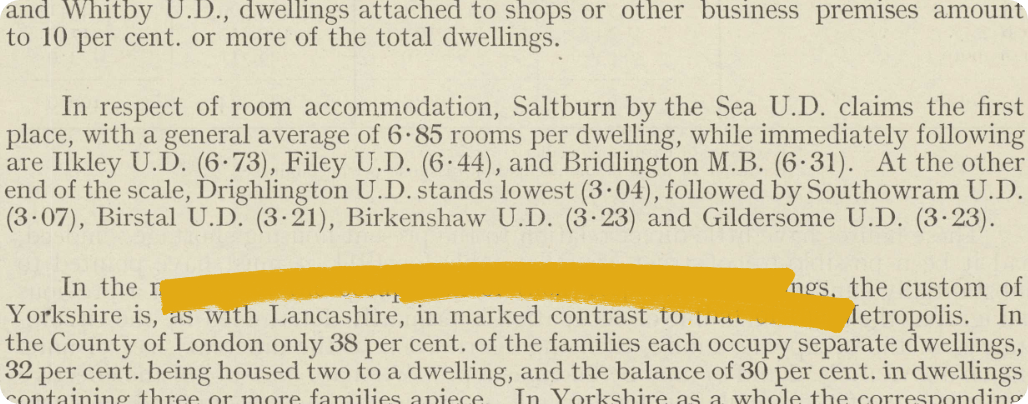
The Yorkshire report for the 1921 Census. View this page here.
The average family size had started to decline since 1911 which meant the average number of rooms per person increased across the country. However, that wasn’t always the case in each city. The national report also stated:
"“Since 1911 the number of vacant dwellings decreased by half, but there were still 215,215. In view of the extreme shortage of houses in 1921 it is perhaps surprising that the decrease shown is not greater, and that existing unoccupied premises are apparently so numerous.” "
Many dwellings remained vacant despite the housing crisis, as lots of working-class families could not afford the high rent
Lack of access to housing was a critical issue at the time of the census and we can see evidence of this in the census returns.
Housing crisis
We found many cases where people used their census forms to complain about their living conditions or appeal to the government for help.
In this example, we found Edwin Cooper, a painter and paperhanger from Birmingham, wrote on the official form that there is only ‘one [room] for the four of us to sleep in. Should be pleased if you could find me a house'.
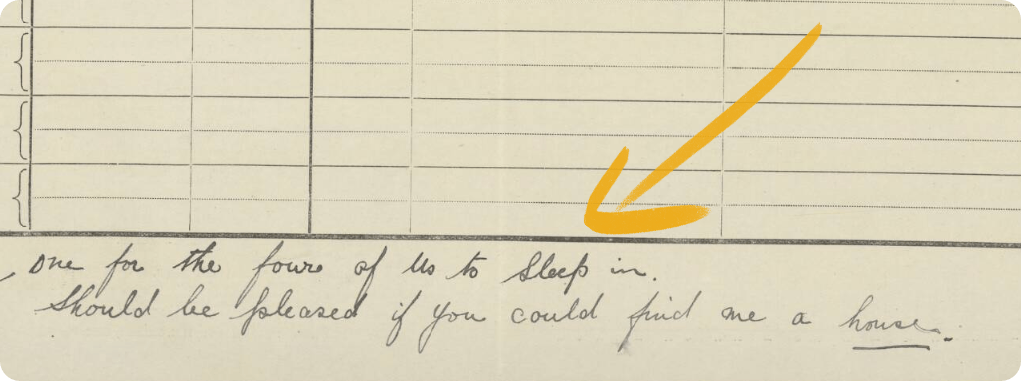
Edwin's note in the 1921 Census. View this record here.
Charles Shephard of Birmingham attached a letter to his census form which explained that he has two children but they were in Gloucester at present because him and his wife were living in one room and could not get a house.
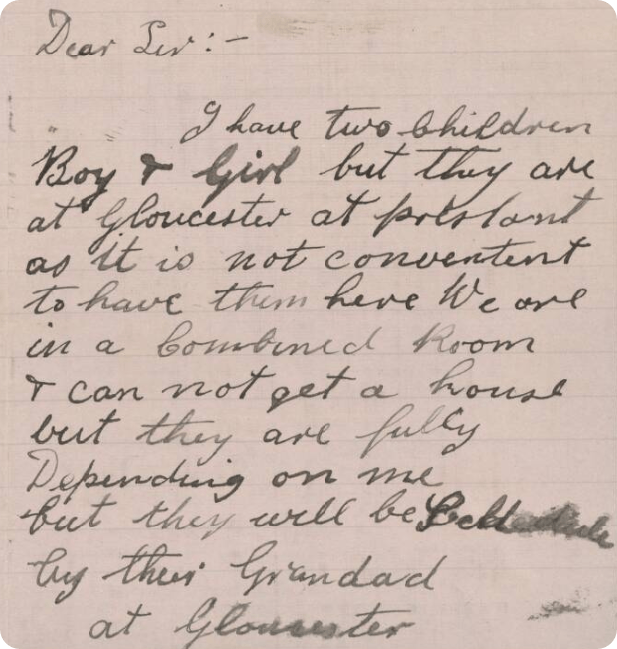
Charles' note in the 1921 Census. View this record here.
This letter is a great example of why it is so important to look at the image thumbnails below your census form. You never know what else could be there.
Finally, not all additions to the forms were complaining about the size of the homes.
One woman, Mary Walters, a 53-year-old widow from Essex wrote on her form that she knew it was ‘preposterous for one woman’ to be living in a home with five rooms, but recently her daughter was married and moved to a new home. Mary said she was waiting to move to a ‘more suitable’ home.

Mary's note in the 1921 Census. View this record here.
How many rooms did your ancestor have in their home? Now's the time to find out.
Discover today with the 1921 Census of England and Wales.

